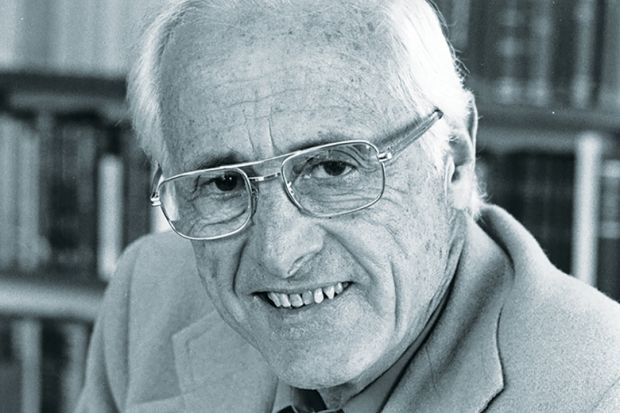A researcher who played a central role in the development of space exploration and supersonic flight has died.
Walter Vincenti was born in Baltimore, Maryland in 1917 but was raised in California and went to Stanford University in 1934. After majoring in mechanical engineering, he went straight on to the aeronautics graduate programme and was then selected to join Ames Aeronautical Laboratory for what later became the National Aeronautics and Space Administration (Nasa). Through research in wind tunnels and complex mathematical analysis, the team transformed aircraft design and pioneered supersonic flight; Professor Vincenti’s own swept-wing model became – and remains – the industry standard.
His years at the Ames laboratory (1940-57) included a period when he also served as a non-commissioned naval officer and a sabbatical year at the University of Cambridge studying the physics and chemistry of high-temperature gases. In 1957, as part of plans to revive the Stanford aeronautics department, he was offered a tenured professorship of aeronautics and astronautics.
A few months later, when the Soviet Union successfully launched the Sputnik satellite, the subject suddenly became a hot political issue.
“Washington came and pushed money at us,” Professor Vincenti once recalled. “We didn’t have to go and ask for it…Within three years, we had one of the biggest research budgets of any aeronautics department in the country, and had increased our faculty much faster.”
At Stanford, where he remained until he retired and became emeritus in 1983, Professor Vincenti played a key role in developing the technology of spaceship re-entry. Yet he became equally interested in the history and ethics of technology. In 1971, he co-founded what is now Stanford’s interdisciplinary Program in Science, Technology and Society. He also published a book titled What Engineers Know and How They Know It: Analytical Studies from Aeronautical History (1990). Most unusually, therefore, he received not only the 1998 Leonardo da Vinci Medal from the Society for the History of Technology but also the 2016 Guggenheim Medal for a lifetime of work in aeronautics.
“It’s rare for a person to receive the highest awards in a technical field and a field of the social sciences,” said Robert McGinn, professor emeritus of management science and engineering at Stanford, who added: “Besides being a superb scholar, [Professor Vincenti] was a person of great integrity, kindness and support for his junior colleagues.”
Professor Vincenti died on 11 October of complications arising from pneumonia and is survived by a daughter, a son, two granddaughters and four great-grandchildren.




